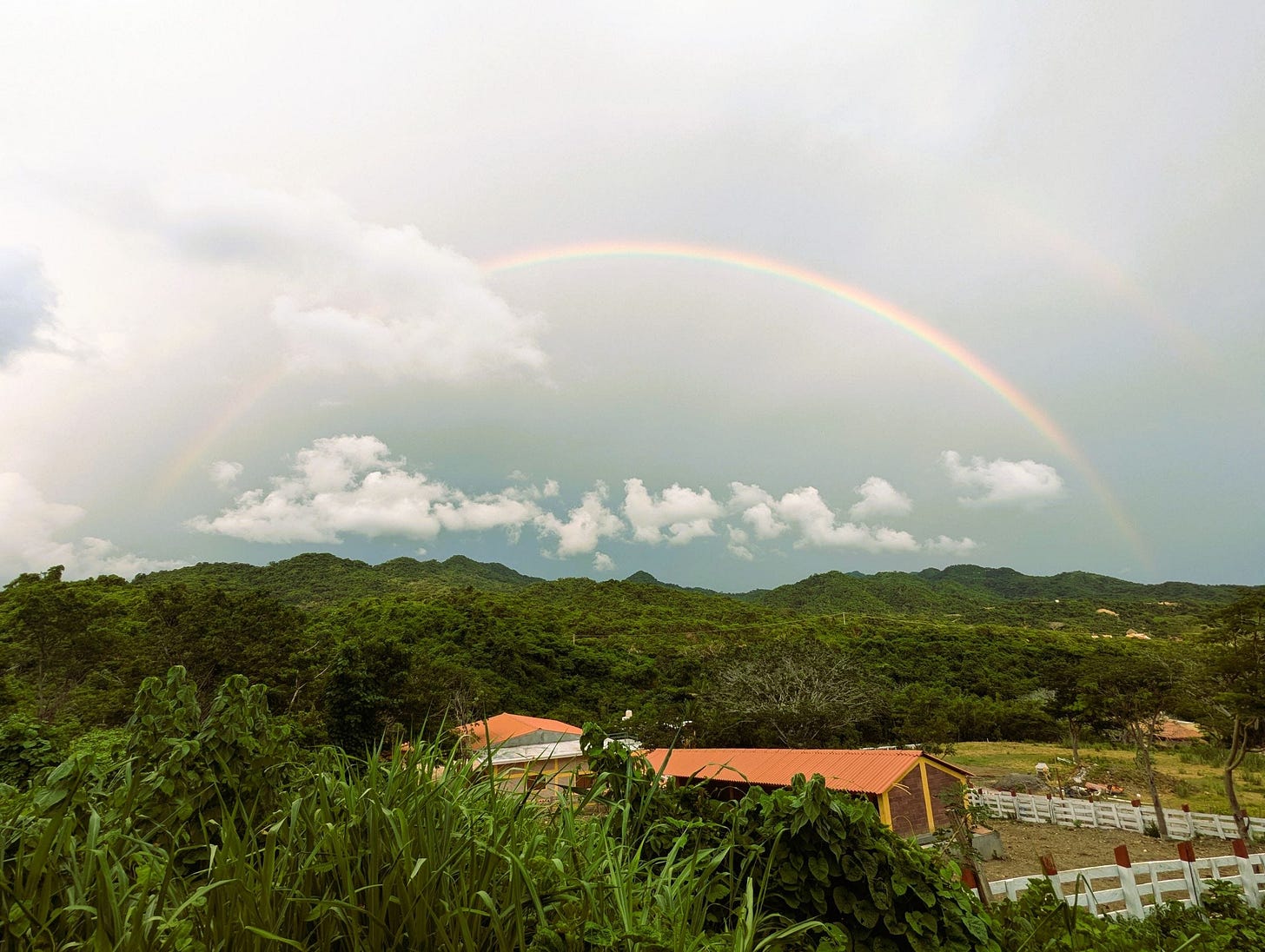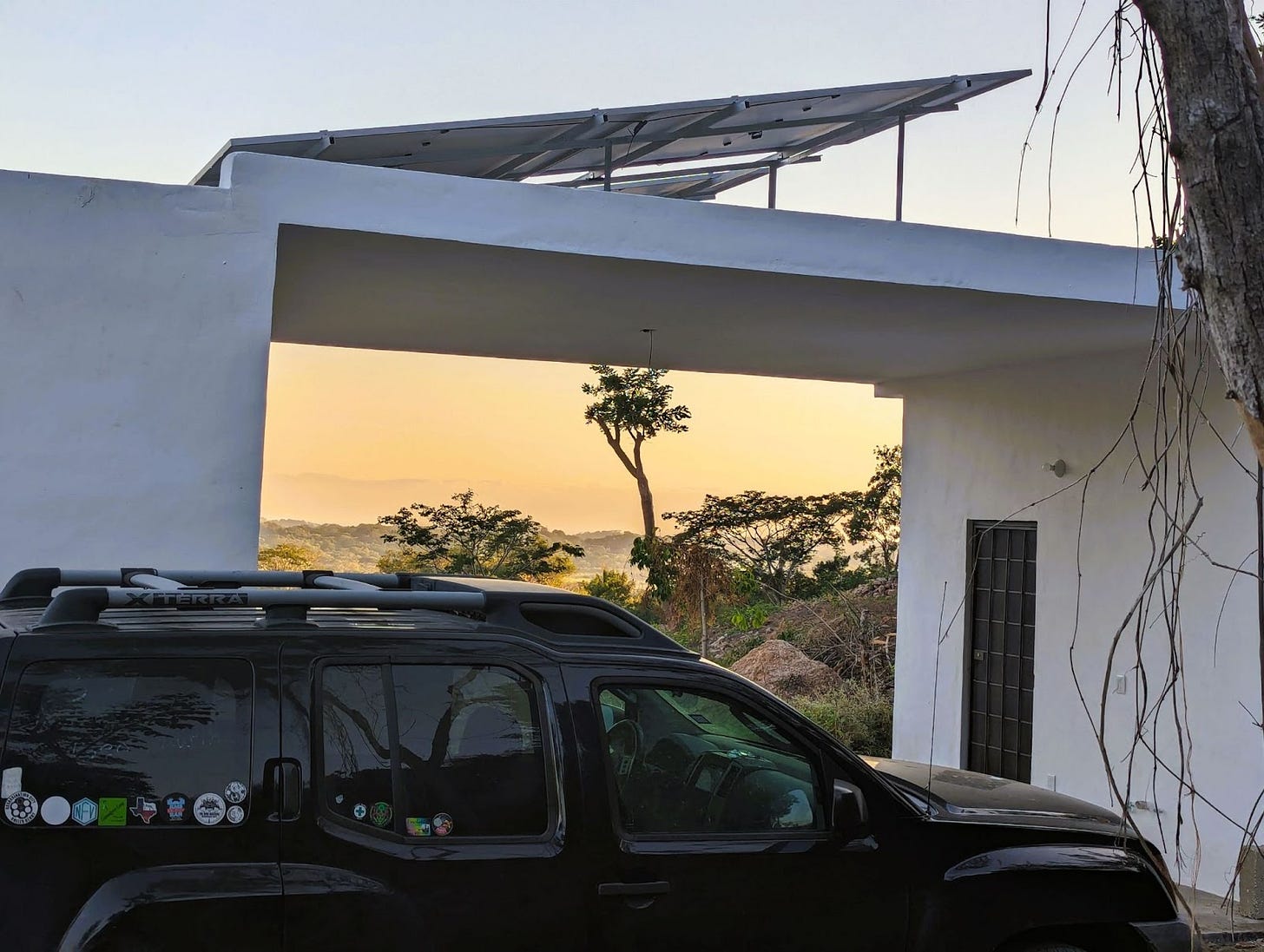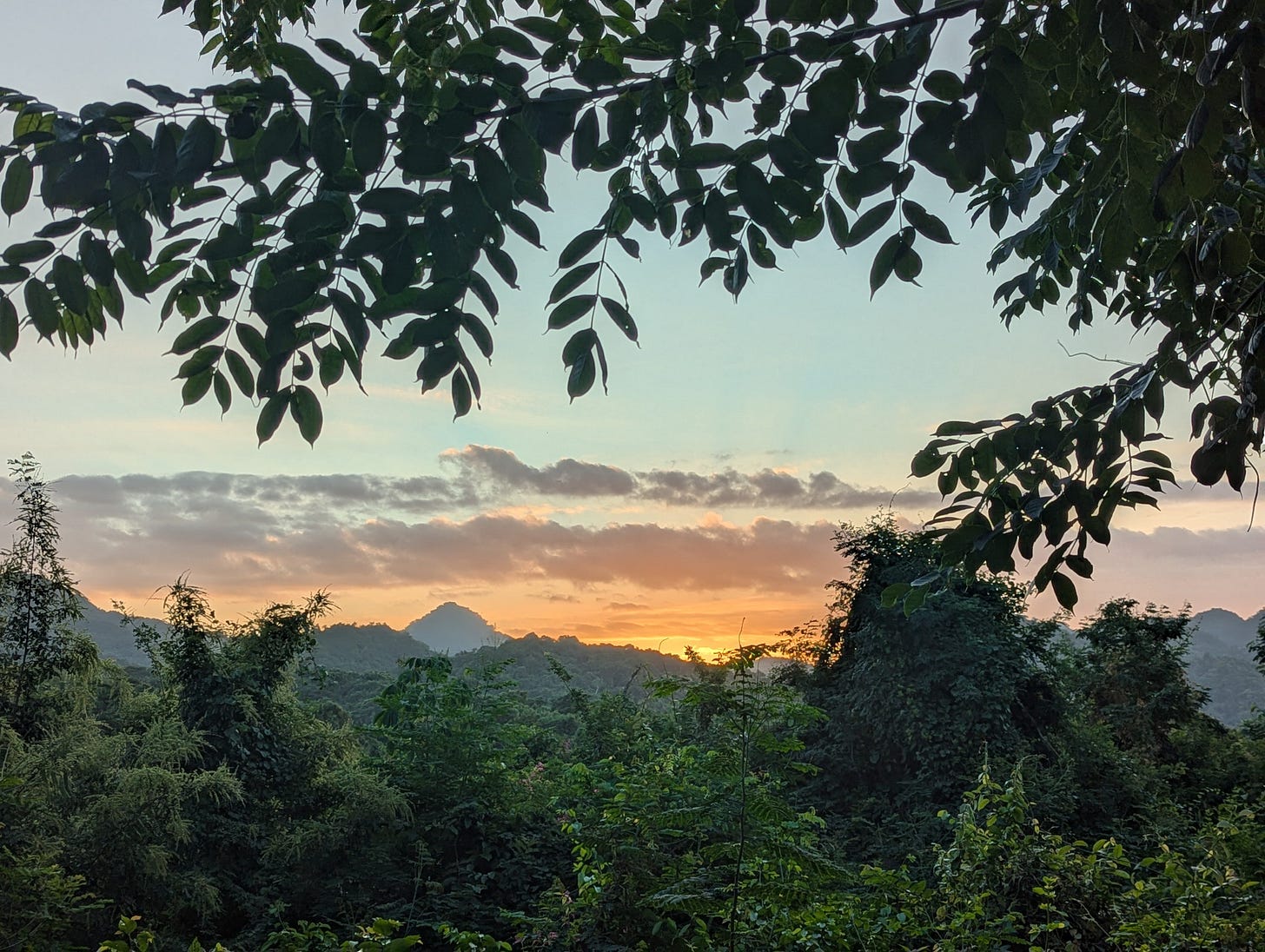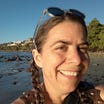Hi lovely reader 👋
Welcome to Off-Grid Voices, a series of written interviews with others who are out there living their best lives, living lives that are a little outside the norm, a little different. I’m hoping this series will inspire some of you who may be thinking about living a life off the grid, homesteading, travelling the world, doing #vanlife, or anything else that you may be considering. Hope you enjoy exploring these lifestyles with me. 😊
This week I’m talking with Julie from “
.” Julie writes over on her Substack where she shares stories of her off the grid life in the jungle of Mexico.But I’ll let Julie introduce herself.
Hi Julie, tell us a bit about yourself.
Greetings! I’m the Julie of “Julie and Lurko in Mexico.” My Substack profile describes me as “A 50-something Brazilian-American learning to live with a 50-something Cuban-American in an off-grid tiny home in the jungle of Nayarit, Mexico.” I started my Substack almost a year ago, because I used to love writing and I missed it. Today I’m thrilled to have my 100th subscriber!
Here’s a picture of Lurko and me, the day we arrived in our new home in November 2023. We look like we just drove 1000 miles, because we did. (From Austin, Texas to Higuera Blanca, Nayarit.)
Now, you live in Mexico. Tell us a bit more about where exactly you live, why it’s such a special place for you and why you love it so much?
We live in Higuera Blanca, Nayarit, which is about an hour north of Puerto Vallarta. It’s a tiny pueblito nestled between the more popular resort towns of Punta Mita and Sayulita. The reason it’s not been “discovered” is because it’s not right on the beach. However, Litibu Beach is only a 10-minute drive from our house (or a 45-minute walk, which I’ve done).
How we got here was a circuitous route, starting in Guadalajara. My family moved there when I was 16, and I graduated from the American School of Guadalajara (Go Warriors!!). I moved back to Texas as soon as I graduated, and my parents stayed. They loved Mexico because it reminded them of Brazil, where my father was born, and where they spent the first two years of their marriage. They loved the Mexican beaches, and after my siblings returned to the States, my parents sold the Guadalajara house and moved to an apartment in Bucerias, just north of Puerto Vallarta. They stayed there for about four years, and liked it but they saw Bucerias getting bigger and bigger, and they wanted to be in a small town. So they looked north and found a little lot in Higuera Blanca, built a house, and stayed there for the next 20 years. Throughout all of this I was coming home to visit at least a couple times a year, so eventually Higuera Blanca felt like my home as well.
By 2022 I came to the realization that my parents weren’t getting any younger, and the United States was feeling less like home and more like waking up next to a stranger. When my boyfriend Lurko suggested that it was time to leave the U.S., there was no question in my mind about where I wanted to go. I asked Lurko if he wanted to come with me, and he said yes so here we are.
I read on your Substack that you’ve been living there for roughly 18 months now. Tell us a bit more about your journey towards this lifestyle. How did you decide to move there, what inspired you to seek out this way of living?
Ever since I was kid, the idea of living off the land in unconventional housing always appealed to me. I loved books like Little House on the Prairie, The Boxcar Children, and My Side of the Mountain. We lived on a farm in Pennsylvania back then, growing our own vegetables, canning, and selling the eggs of our free-range hens. These experiences made an impression on me and I remembered them fondly, even after we moved to the big cities of San Francisco, Houston, and Guadalajara. Later I moved to Dallas and got married, but we had a few friends who lived alternative lifestyles, on farms and RVs and such.
After I got divorced, my ex left me his utility trailer and I started thinking about how I could convert the trailer into an off-grid camper. By then I was doing a lot of camping with my two dogs, and camping in my car was great but having a tiny house to haul behind me sounded even better. This was during the pandemic, so I read lots and lots about how to make a tiny home and live off the grid. I filled many pages of graph paper with exterior and interior trailer designs. I learned how I could make a solar system, and how to handle water, septic, and A/C (very important in Texas). At that time, my brother had bought a school bus and was already doing this stuff, and my boyfriend was in construction, so I had a few resources. But when we decided to move to Mexico, I put those plans aside and concentrated on selling the house and trying to get residency.
When we came to Nayarit in April 2023, looking for a place to live, we weren’t thinking a lot about living off the grid. We looked at houses and apartments in Higuera and the surrounding areas, but nothing was really grabbing us. I really liked the idea of building our own house from scratch, exactly the way we wanted it, so we expanded our search to include empty lots. One day the construction company who built my parents’ and my sister’s houses called me and said they knew of a lot being offered at a good price. We had to drive through a dry creek, up a dirt road, and up a hill to get to it, but once we arrived, I took one look at the breathtaking view that surrounded us, and I knew this was where I wanted to live. The catch? No city services- no power, water, phone, internet, or sewer. We would be on our own and 100% off the grid. I decided that was ok and we could figure it out. Two months later, the construction company was breaking ground for the foundation.
Let’s talk about all things “off-grid” - tell us a bit about your living situation. I always like to say there are “degrees of off-gridness”, so where would you situate yourself? Tell me all the details, how do you get your power, water and what’s the toileting situation?
We are 100% off the grid, but I wouldn’t say we’re roughing it.
Power: I knew right away we were going to use solar. It seemed like the obvious choice in sunny Mexico! Our current system uses twelve 500-watt panels, an inverter, and three 5000 watt batteries for storage. It’s enough to run two air conditioners (not 24/7), a water pump, a refrigerator, a desktop computer, two fans, two laptops, and various kitchen appliances. We don’t use a microwave oven, and our stove is powered by propane gas.
Water: A 12,000 liter cistern lies under the northeast corner of the property. About every six months, we have to call the water truck to come fill it. In an effort to call the water guy less often and be more sustainable, we are working on a rainwater collection system. We only have rain for six months out of the year, so we collect it in barrels while we can, then run a hose to the cistern. Our third source of water is the exhaust from the air conditioner. The humidity here is so high, I can fill a 5-gallon bucket in less than two days. I usually use it to water plants or to fill toilet tanks. For drinking water, we buy 5-gallon jugs from the local mini super. It works ok but hauling 5-gallon jugs in and out of the car is hard work. Eventually, we would like to buy a UV filter to make our cistern water safe to drink from the faucet.
Sewer: We have regular toilets and plumbing. Our septic tank lies underground on the southwest corner of the property. We want it to last for years, so we try not to overtax it. We never use chlorine bleach for cleaning, because that would destroy the good bacteria that’s breaking down the poop. I only use vinegar, baking soda, and castille soap to clean. When I do laundry, that waste water goes into the toilet tank or onto the plants. I also try to avoid flushing a lot of toilet paper, and dispose of lightly-used TP the Mexican way, in a wastebasket with a lid.
Phone: We don’t have a landline, and TelMex doesn’t reach our house even if we wanted it. So we use cell phones, like most people in Mexico. Unfortunately, coverage is not great in our rural area. Ironically, our hill has a cell tower at the top, but our house is located in the hill’s shadow, so to get good reception we’d have to run to the bottom of the hill. We do have a workaround for this, via our wifi connection.
Internet: My lifeline to my job, so we have to be picky about this. The local phone company actually has decent fiber optic internet (my parents got it a couple years ago), but again, it doesn’t reach our house. The best alternative here ended up being satellite internet via Starlink. We have a nice, unobstructed view of the sky and not a lot of users competing for bandwidth. Plus, we got a good deal on the equipment because Starlink Mexico has been trying to make itself more accessible to Mexican customers. Other than brief outages some nights at 4am when the router decides to reboot, we have been quite happy with our Internet service.
When you first moved to Mexico into your tiny home, what was your biggest learning? Or what was the thing you needed to learn straight away?
Solar power was definitely the biggest learning curve for us. Before we could design a system, we had to figure out how much power we would need to run two air conditioners, a fridge, a water pump, a desktop computer, two fans, two laptops, and various kitchen appliances. We designed a system and called a few companies for quotes and to help us with installation - we didn’t know enough to do this by ourselves. Choosing the solar company was also a learning curve: on how to do business in Mexico. (Lots of hurry-up-and-wait, and they thought nothing of calling or coming out at 9pm if it meant pushing a sale through.) Once the system was installed, we had to learn what all the beeps and blinky lights meant on our inverter and batteries, what to do when we drained the battery and tripped the alarm, and what to do to avoid tripping the alarm in the future.
Relatable, understanding the solar system was definitely one of my biggest learnings too!
What would be the biggest benefits you see to living life your way?
I very much enjoy not having to depend on the grid. The power, water, and phone companies in Mexico are notoriously unreliable. They don’t have the infrastructure to support its population, and my parents often have to deal with blackouts, or the water getting shut off for days at a time. They write it off as part of life in Mexico… but now I know there’s a better way.
Life is all about ups and downs, so tell me a bit more about the biggest challenges you’re experiencing? What is your biggest current challenge?
When we first installed our solar, we couldn’t afford the system we wanted, so as a compromise we started with an “intermediate” system of seven panels and one 5000 watt battery. By the following year we were able to upgrade to 12 panels and three 5000 watt batteries, and that made our lives so much easier. That year in between was rough. We didn’t have enough power to plug in our refrigerator, so we were having to go into town for ice every day to refill our coolers. And we had to shut off our A/C by 4pm every day, because we didn’t have enough battery power to run it at night. We tried opening windows and running fans, but the summer nights were SO hot and it was hard to sleep. Plus leaving the windows open invited bugs, and we were getting killed by mosquitoes and no-see-ums. Finally expanding our solar system, plus regular fumigation, started making our home more liveable. Every other problem now seems like a breeze compared to that first year!
So interesting, our first year we had the opposite problem: our first winter was harsh due to a lack of power. I still remember that feeling of being so cold, but now everything feels easy compared to that winter.
What would you recommend to other people who are thinking about making a big lifestyle change, maybe thinking about moving off the grid or moving more rurally ?
It’s totally doable. Just be prepared for a big up-front expense if you decide to go solar and you don’t have the know-how to install it yourself. I’m still glad I didn’t try to do solar on my own- for a camper I would have tried, but for the house we couldn’t afford to make a mistake. The equipment costs too much to risk frying if I mess something up. I’m smart and can figure stuff out, but home systems are not something I want to try to learn by watching YouTube videos.
Lurko and I made a BIG change- in our relationship, in our lifestyle, and in our country. The stress of moving to a new country and building an off-grid home can take a toll. Not all relationships will survive– ours barely did. I think what saved us is that we had already been friends for 20 years. If you choose to take this journey with someone else, your relationship needs to have a solid foundation. Make sure you’re solid before you make the leap.
What is your most favourite resource about this type of lifestyle?
Tough to narrow down to just one! When I was in the planning stage, I often referred to The Self-Sufficient Backyard by husband-and-wife team Ron and Johanna Melchiore. It delved into a little of everything I needed to know about designing an off-grid home. Now that our house has been designed and built, I’ve shifted to learning about gardening and food preservation. I love Attainable Sustainable by Kris Bordessa (and her blog is great too). For learning about permaculture, I’ve been leaning heavily on The Suburban Micro-Farm by Amy Stross, and her accompanying blog Tenth-Acre Farm. And for learning how to grow food in hot climates, I recently downloaded Food Forest Plants for Hotter Conditions by Plants for a Future. I also read a ridiculous number of blogs by homesteading/ farming ladies. There’s so many good ones. Cold Antler Farm, Practical Self-Reliance, Scrap Farm, Slowdown Farmstead, The Rural Writer, Raw Milk Mama, Healthy Farming Healthy Food, Fat Turkey Farm, Runamuk Acres Conservation Farm, Cecilia at the Kitchen’s Garden, The Goaty Thistle, Me, My Pigs and I. Most of these are on Substack.
This Is Sophie Today is a reader-supported publication and while all posts are free, I need your support to keep this going. If you’re enjoying what you’re reading, consider picking up a paid subscription. A monthly subscription is 5 NZD or 2.8 USD and a yearly subscription is 45 NZD or 25 USD.














I loved this read, Julie, Lurko, and Sophie.
I appreciated how you balanced the romantic idea of off grid living with the real, practical challenges, especially the learning curve around solar power and water.
Also, shoutout for being honest about how tough big life changes can be on relationships. I'm still trying to convince my husband that it is time to leave America. A tough task indeed.
I hope you all enjoy the rest of your week.